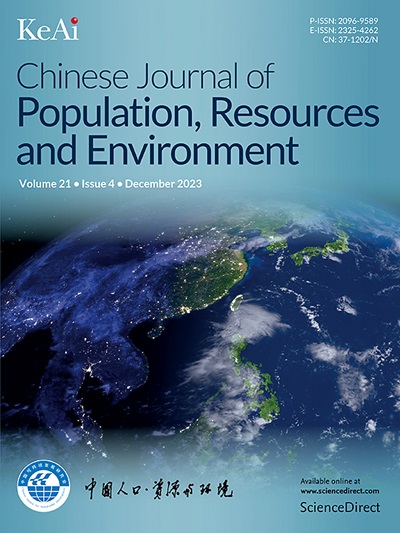基于知识图谱的郴州市可持续发展路径设计
IF 4.8
4区 环境科学与生态学
Q2 ENVIRONMENTAL STUDIES
Chinese Journal of Population Resources and Environment
Pub Date : 2024-12-01
DOI:10.1016/j.cjpre.2024.11.009
引用次数: 0
摘要
城市可持续发展涉及经济、社会、生态等领域,数据类型复杂,语义关系丰富。知识图谱在构建知识网络和展示知识关联方面的优势,为城市可持续发展研究提供了新的手段。本研究以中国可持续发展议程创新示范区资源型城市郴州为研究对象,采用自上而下的方法,运用“七步法”和“骨架法”,通过手工编辑构建城市可持续发展本体。构建了包含515个节点、3 209个关系、28 157个属性的郴州市可持续发展知识图谱。基于该知识图谱,提出了可持续发展的措施和途径。结果表明,郴州未来可持续发展应以创新、增长、减排为核心,围绕高质量、可持续发展展开。推进科技成果转移转化,加快产业结构优化升级,加强人才培养和招聘,将培育新的优质生产力,为郴州高质量可持续发展提供强大动力和支撑。为加快绿色经济转型,郴州应完善市场化的资源环境要素配置体系,探索“生态系统生产总值+生态环境导向发展”的项目实施模式,鼓励企业采用环境、社会、治理原则,促进供需协同。此外,协调郴州低碳城市试点项目,构建以自然为基础的碳封存路径,将有助于实施“双碳”行动,增强城市应对气候变化的能力。本文章由计算机程序翻译,如有差异,请以英文原文为准。
Design of a sustainable development path in Chenzhou based on a knowledge graph
Sustainable urban development involves many fields with complex data types and rich semantic relationships, such as the economic, societal, and ecological fields. Knowledge graphs provide a new means for sustainable urban development research by leveraging their strengths in the construction of knowledge networks and display of knowledge associations. Focusing on Chenzhou, a resource-based city serving as a China’s Innovation Demonstration Zone for Sustainable Development Agenda, this study adopted a top-down approach, applying the “seven-step” and “skeleton” methods to construct an ontology for sustainable urban development through manual editing. A knowledge graph was constructed for Chenzhou’s sustainable development, comprising 515 nodes, 3 209 relations, and 28 157 attributes. Sustainable measures and pathways were proposed based on this knowledge graph. The results showed that Chenzhou’s future sustainable development should focus on innovation, growth, emissions reduction, centering around high-quality and sustainable development. Promoting the transfer and transformation of scientific and technological achievements, accelerating the optimization and upgrading of industrial structures, and enhancing talent cultivation and recruitment will foster new quality productive forces, providing strong momentum and support for the high-quality and sustainable development of Chenzhou. To accelerate the green economy transition, Chenzhou should improve the market-oriented allocation system for resources and environmental factors, explore the “gross ecosystem product + eco-environment-oriented development” project implementation model, encourage enterprises to adopt environmental, social, and governance principles, and foster synergies between supply and demand. Furthermore, coordinating Chenzhou’s low-carbon city pilot projects and constructing carbon sequestration pathways that leverage nature-based solutions will help implement the “dual carbon” actions and enhance the city’s ability to respond to climate change.
求助全文
通过发布文献求助,成功后即可免费获取论文全文。
去求助
来源期刊

Chinese Journal of Population Resources and Environment
ENVIRONMENTAL STUDIES-
CiteScore
4.30
自引率
1.10%
发文量
791
审稿时长
79 days
期刊介绍:
The Chinese Journal of Population, Resources and Environment (CJPRE) is a peer-reviewed international academic journal that publishes original research in the fields of economic, population, resource, and environment studies as they relate to sustainable development. The journal aims to address and evaluate theoretical frameworks, capability building initiatives, strategic goals, ethical values, empirical research, methodologies, and techniques in the field. CJPRE began publication in 1992 and is sponsored by the Chinese Society for Sustainable Development (CSSD), the Research Center for Sustainable Development of Shandong Province, the Administrative Center for China's Agenda 21 (ACCA21), and Shandong Normal University. The Chinese title of the journal was inscribed by the former Chinese leader, Mr. Deng Xiaoping. Initially focused on China's advances in sustainable development, CJPRE now also highlights global developments from both developed and developing countries.
 求助内容:
求助内容: 应助结果提醒方式:
应助结果提醒方式:


